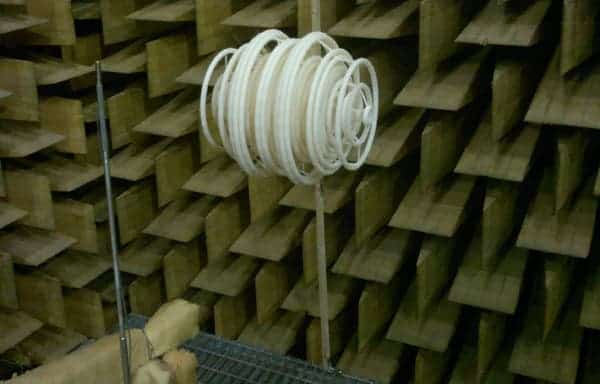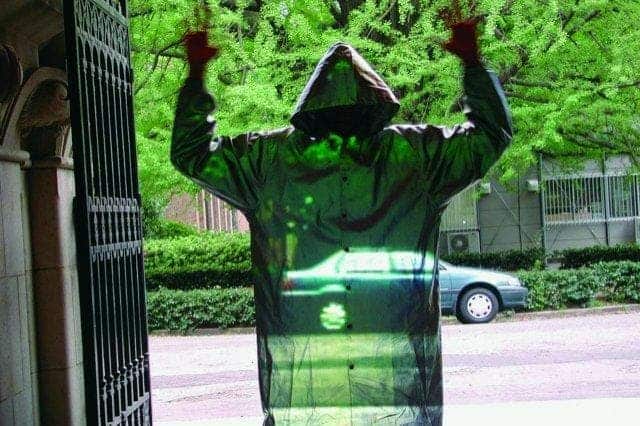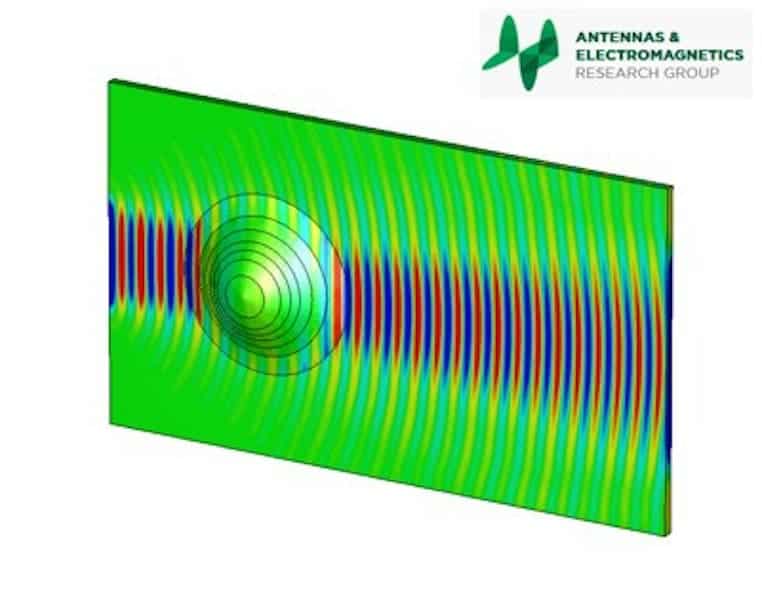After scientists have devised materials that rend objects optically invisible, researchers in Spain have developed a method that allowed them to cloak 3-D objects from sound waves for the first time. While sound cloaking has been demonstrated before, this was the first time that a full 3-D object was concealed. The findings might help engineers build buildings and machinery with considerable noise reduction to help battle noise pollution, and of course aid in the design of submarines and ships that avoid enemy sonar detection.

What’s important to note about the findings, however, is that the cloaking was achieved using readily available, commercial materials, instead of synthetic, lab-built meta-materials that are very expensive and difficult to manufacture. With this in mind, the present sound cloak is actually a multi-layered plastic shell.
What we see is actually light bouncing off objects into our retina – in a way, we’re not actually seeing objects themselves, but their reflections. Invisibility cloaks take advantage of this simple phenomenon and work by steering off the scattering of light around the object. The same effect can be achieved for a sound cloak if you steer away sound waves. The main drawback however is that this requires highly complex materials for this to work.
The researchers at the Polytechnic Institute of Valencia in Spain chose to walk on an alternate route, and instead of preventing sound waves from hitting an object (in this case, an 8-inch sphere), they devised a cloak to eliminate the scattered waves left in the sphere’s wake.
Muting objects with a sound cloak
Using a sophisticated computerized model that told them what kind of design they needed to build around the sphere, the team of scientists lead by José Sánchez-Dehesa built a structure comprised of 60 rings of various sizes that form a cagelike structure around the sphere. Simulations showed that the scattered sound waves bouncing off the sphere and the cloak would interfere and cancel each other out, essentially rending them mute and undetectable.
To test the sound cloak in real life, the sphere-ringed cloak pair was positioned on the ceiling of an echo-free chamber, while a speaker that was pointed at it played a range of sound frequencies. For most frequencies, the sphere scattered an easily detectable amount of sound. But at 8.55 kilohertz — an audible high pitch — the cloaked sphere became imperceptible to the sensors behind it.
This means that the sound cloak works, but it’s still far from being a complete solution. For one, the cloak works only for a narrow frequency range coming from one direction, so if the speaker would have been positioned an inch farther to the right, the cloaking wouldn’t have worked. Then, it has to be custom designed and built for each object, which is quite a hassle. With this in mind, Sanchez-Dehesa and colleagues plan to broadband and multidirectional cloaks.
While submarines and ships will still have a long way to go until they can avoid enemy detection using such technology, the researchers claim that their findings are far from being useless, even in their present state. Structures capable of manipulating a specific sound frequency from one direction could help minimize noise pollution from a congested highway. “The cloak does one thing quite well, with a very simple structure,” said Steven Cummer, an electrical engineer at Duke University, who was not involved in the study.
Findings were reported in the journal Physical Review Letters.






